On the hunt with CBS Hunting Club – a different kind of game
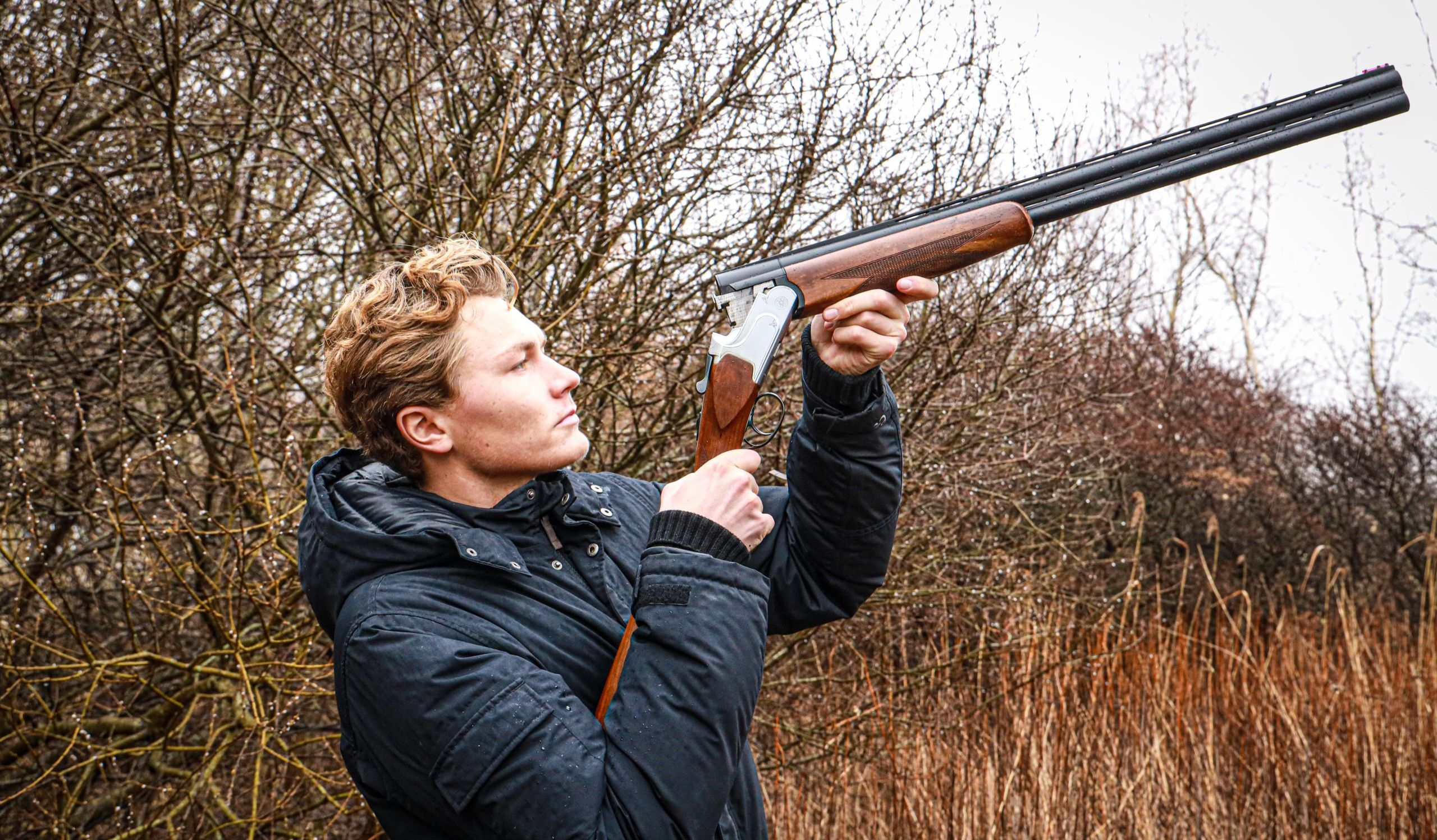
International business student Marius Lohmann prepares for loading with the rifle pointed in a safe direction. Photo: Anna Holte.
Sports, culture, business and academia – CBS student societies offer it all, but only one student society shoots to kill. Since 2012, CBS Hunting Club has introduced students to a tradition dating back perhaps further than any other human pastime. CBS WIRE tagged along with the newcomers to see what training for a hunting licence is like.
The shooting range in Amager is surrounded by a highway, a railway and a golf course, but among the trees, you can almost believe you are in a forest in Northern Zealand waiting for a deer to appear.
The repeated sound of gunshots gives the place away. Soon, flat metal figures depicting wild animals posed on sticks appear at the side of the road. Copenhagen shooting range (Københavns Skyttecenter) is one of Denmark’s biggest shooting ranges and the only outdoor shooting range in Copenhagen.
The persistent morning rain seems to be clearing up just as a group of people start gathering. Their clothes are in shades of green and brown. Feet are kept dry in rainboots and hiking shoes.
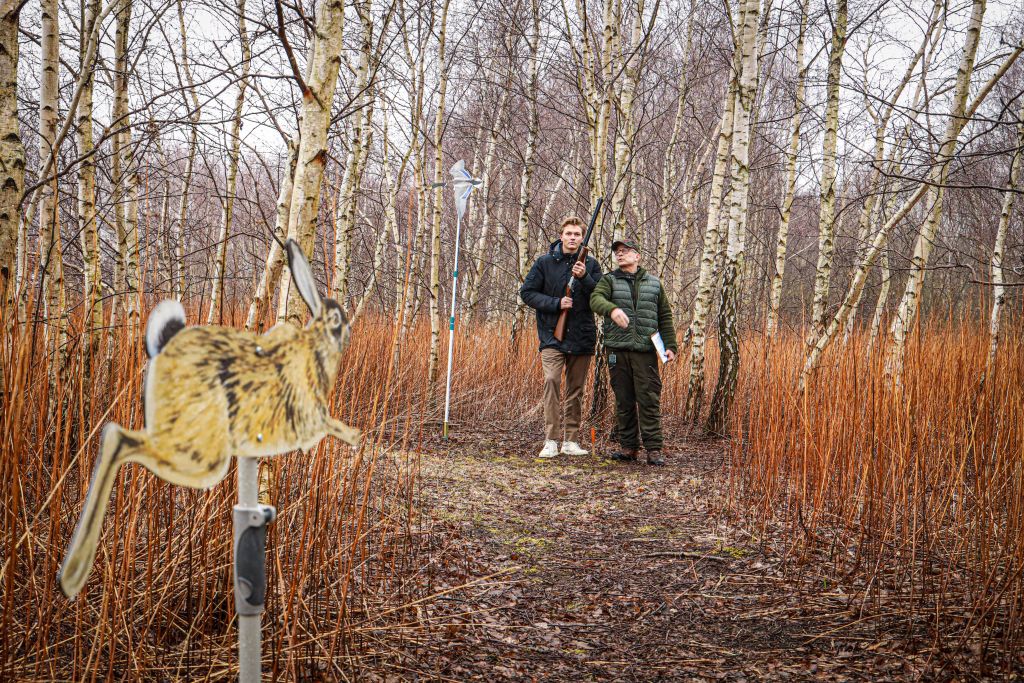
Marius Lohmann and instructor Morten Brøbecher Thorndahl on the distance judging course at Amager shooting range. Photo: Anna Holte.
And then there is Marius Lohmann in bright white sneakers. He is staying with friends while renovating his apartment and packed only a backpack of clothing options. His packing did not foresee a rainy day on a shooting range.
“It was either these or my leather shoes,” he says, looking down at his feet.
He does not seem too bothered. Today is practice and simulation so sneakers will do.
Each year, CBS Hunting Club offers students who are new to hunting the possibility to take a hunting licence course at a discount. The course includes a mix of theory and practice. This Saturday morning, the students are practising distance judgement and shooting, the two practical aspects that make up the hunting licence exam.
It is the second time they are here. Last time, it was crisp and sunny. This spring morning is wet and chilly, but spirits run high.
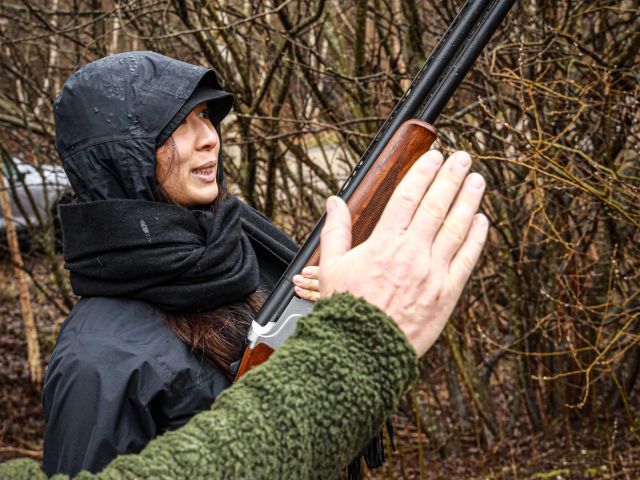
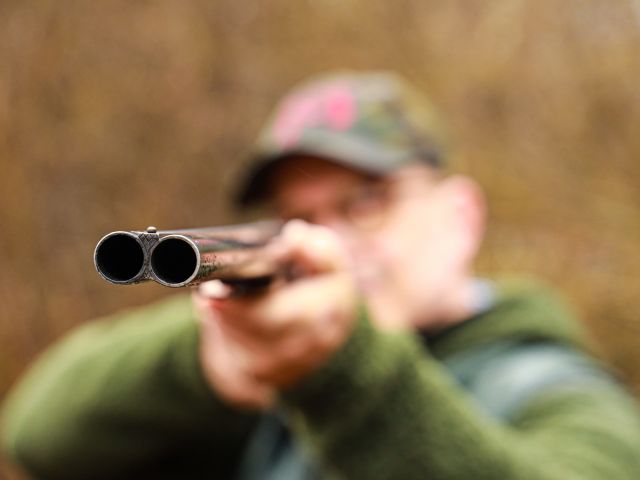
Waiting with two other friends, Marius Lohmann says that “group pressure” is the reason they are here.
The guys, who all study international business together, were encouraged by their fourth friend who is currently out on the course with the instructor.
“I was quick to say yes. I had thought about it for a long time,” says Frederik Reventlow.
They are excited to be outside and doing “almost the real thing”. Because after an introductory session in the classroom, with study cards of Danish animals, at the hunting range it is getting more real.
“As soon as we’re up there, we’re being tested,” says Marius Lohmann, tilting his head towards the small hill where the distance judgement course starts.
“We follow the real rules, and you don’t talk when you walk around. You have to concentrate.”
The most difficult thing?
“Guessing the right distance,” they say.
Shoot to kill
The hunters should only shoot to kill. While this may sound cruel, it is actually meant to spare the animals from suffering. An injured animal may wander off into the forest, never to be seen by the hunter again and suffer a slow death.
Danish hunting regulations stipulate from exactly what distance a hunter is allowed to pull the trigger – the distance from which they would have a good shot, literally speaking, at killing the animal. The distance varies depending on the animal: deer up to 20 metres; geese and foxes up to 25 metres; hares, pheasants and ducks, up to 30 metres.
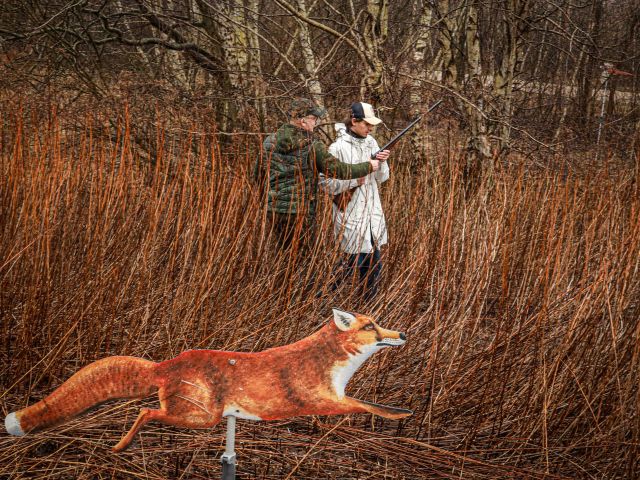
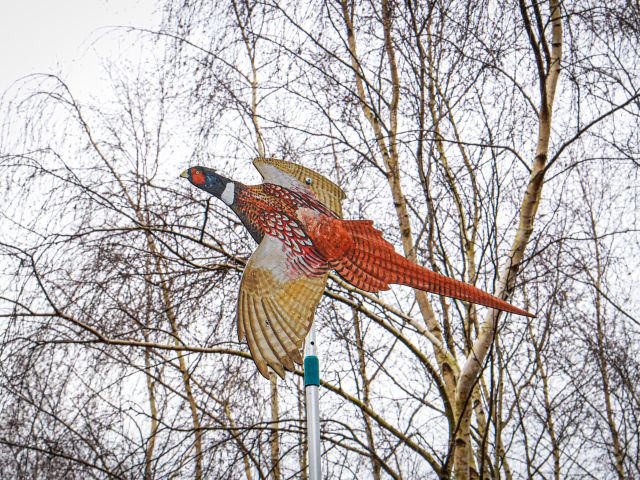
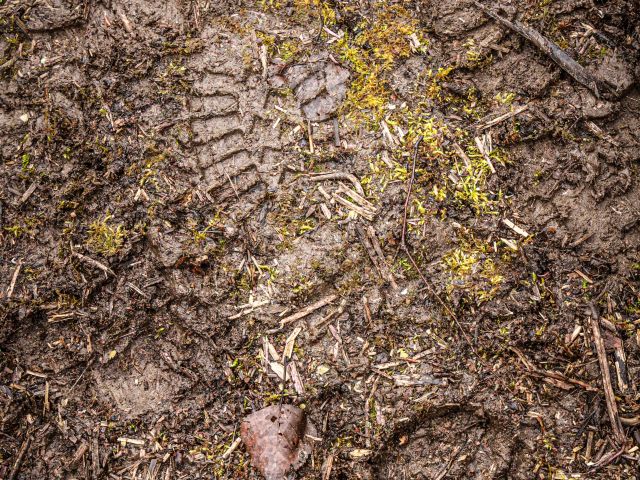
Being able to estimate distance in the wild is therefore a key skill for a hunter. The first exercise of the morning serves to practise just that.
It is Marius Lohmann’s turn. He crosses a ditch over wooden planks and walks up a small hill, where the instructor, Morten Brøbecher Thorndahl, is waiting.
“Welcome. We are going hunting, so please take a weapon,” he says and hands him two bullets.
“They are blanks,” he reassures us bystanders.
“Let’s start the hunt.”
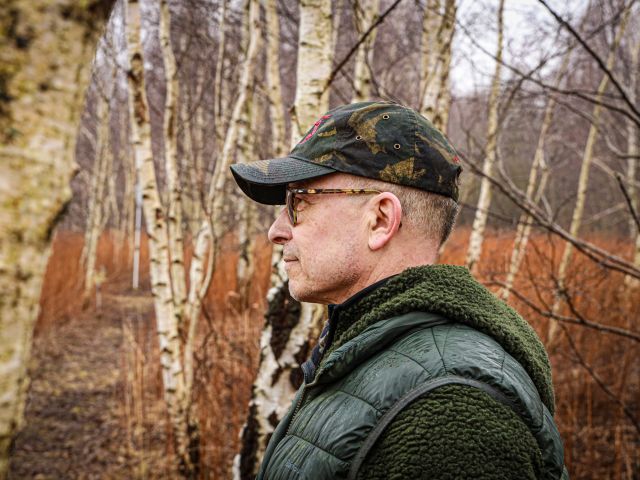
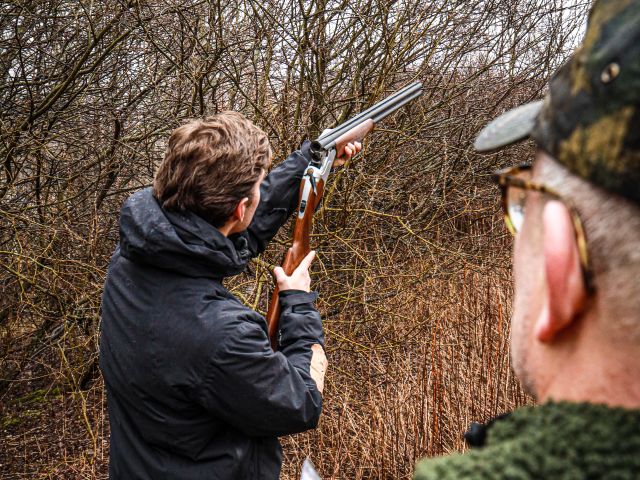
The hunters set off down a path lined with tall orange grass that adds colour to the grey morning.
As they come to a halt, Morten Brøbecher Thorndahl points at the image of a duck on a stick in the distance.
“That mallard there, can you shoot it?”
“Yes,” Marius Lohmann responds.
“And that fox,” he says, pointing in another direction. “Can you shoot it from here?” he asks.
“Yes.”
Morten makes a note on his paper, and they continue down the path.
You can’t start thinking about other things, because then the deer might walk right past you.
Jonathan Schouenborg
On the way to the next mark, Marius Lohmann has to climb over a wood pallet turned on its side. Weapon handling is also practised on the route – the pallets simulating obstacles you might encounter in the wild, such as a stream or bushes.
The simulated hunt passes four more animals before we return to our starting point.
Marius Lohmann gets praise for his weapon control, but on the distance judgement he got two wrong – the fox and the pheasant.
On the real license exam, he can only miss one.
Friends and family
Back down by the road, tips are being shared on how to estimate distance: comparing to the height of trees, remembering which of the animal’s features you can make out clearly from a certain distance or just plain practise until you get it right.
The majority of the group are CBS students, but some others have also joined the external course provider that CBS Hunting Club uses.
Waiting in rubber boots is Jonathan Schouenborg, a PhD candidate at DTU. Growing up in the centre of Copenhagen, he did not have hunters in his family, but he married into a family that hunts. His father‑in-law finally convinced him – it took three years. It is not the easiest hobby to combine with a student budget, but now he is keen to get started.
“It’s exciting to be out in the open. You learn a lot about nature and get to really know where our food comes from.”
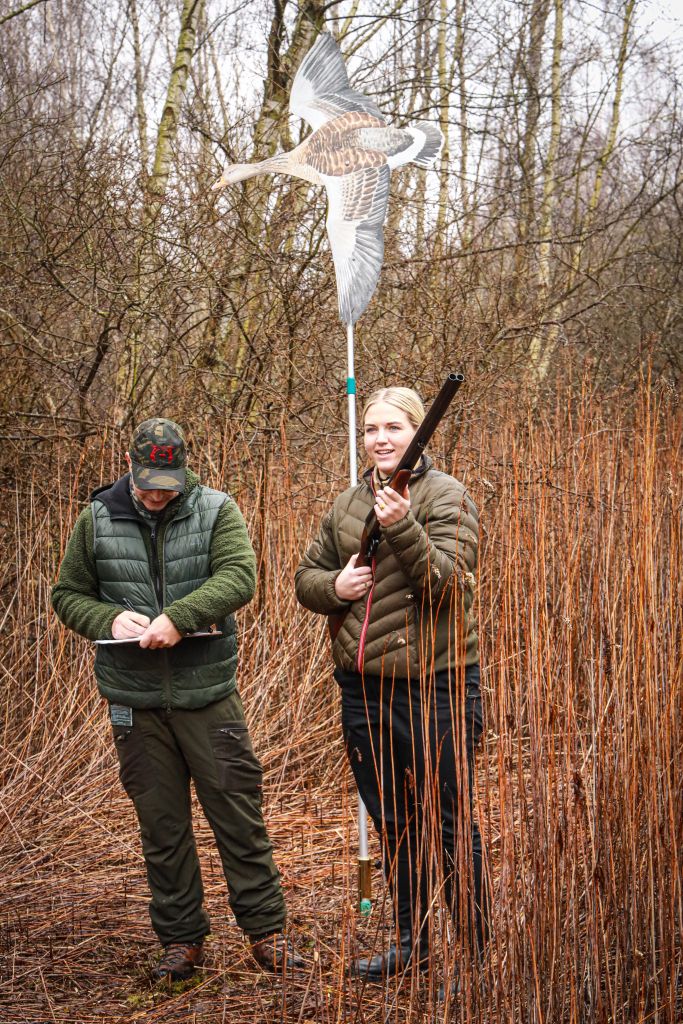
Stine Christensen.
Hunting your own food, he thinks, will speak to his tastebuds but also give him a feeling of accomplishment. He calls it the IKEA effect – that particular pleasure of enjoying something you have put together yourself from scratch.
Waiting in the forest, he believes, can also offer a sort of meditation. Your mind must remain in the present. You cannot let your thoughts slip.
“You can’t start thinking about other things, because then the deer might walk right past you.”
On its Facebook page, CBS Hunting Club’s banner says: “No great story ever started with someone eating a salad”. But when asked what brought them here, no one seems to mention a love of meat.
Most people mention the sense of community.
One evening in Solbjerg Plads, two months earlier, when Morten Brøbecher Thorndahl held an introductory session for the new hunters, he gave everyone a firm handshake as they arrived. That is how you greet people on the hunt.
When you spend time with firearms, it is important to know who you are with. You do not join a hunting team unnoticed. Hopefully you even make friends.
Clay pigeons and earpugs
After the distance judging course, one by one the participants follow the bend in the road to the shooting range.
Carsten T. Jørgensen welcomes with a handshake and a smile, as if he has been waiting just for your arrival all morning. He holds up his ID card showing he is a certified shooting instructor.
Earplugs are required on the range, which means conversations are held with tilted heads and recurring repetitions. Visuals come in handy.
The shooting posts are under a roof and separated by wooden walls.
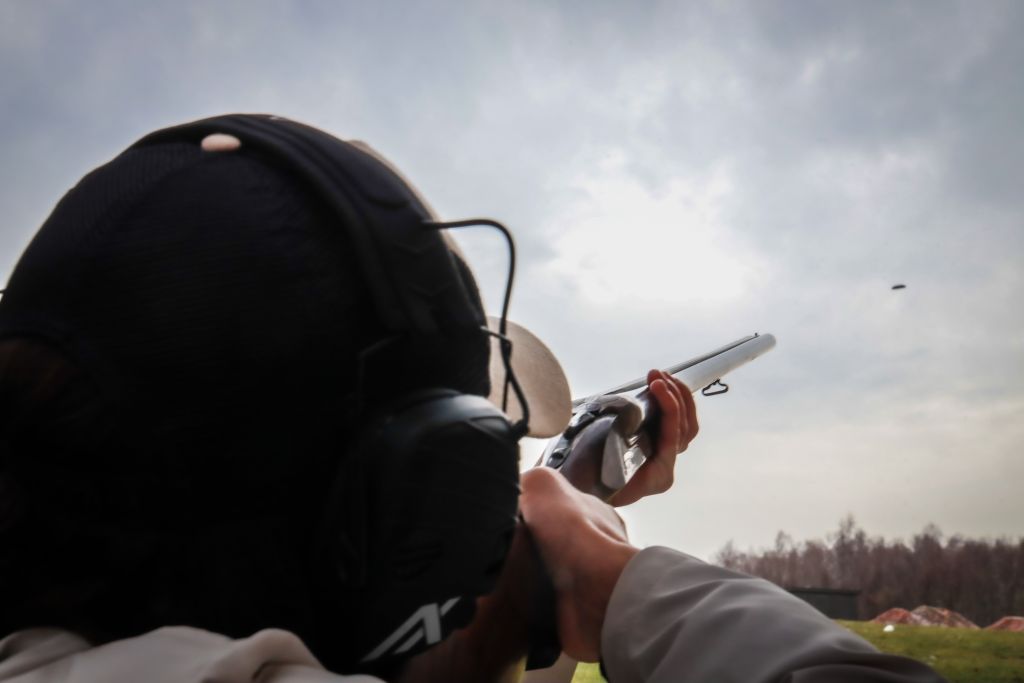
Jacob Andersen takes aim. He tried some shooting previously as an exchange student in the US. The guns there were bigger. Photo: Anna Holte.
Jacob Andersen takes a rifle and lines up.
Clay pigeons are propelled out from beside the shooting stand. Despite their name, they look nothing like pigeons – more like small fat frisbees.
The cartridges eject to the side of the rifle. Carsten T. Jørgensen catches one on the fly. He first offers it as a memento, but then reminds himself – they should be recycled – he should probably leave it in the bin with the rest.
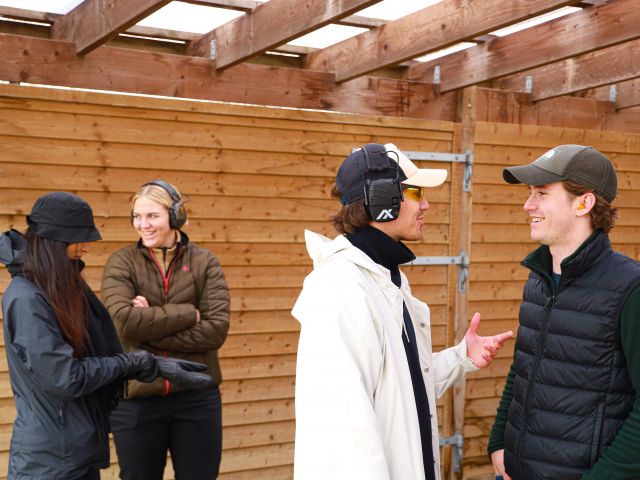
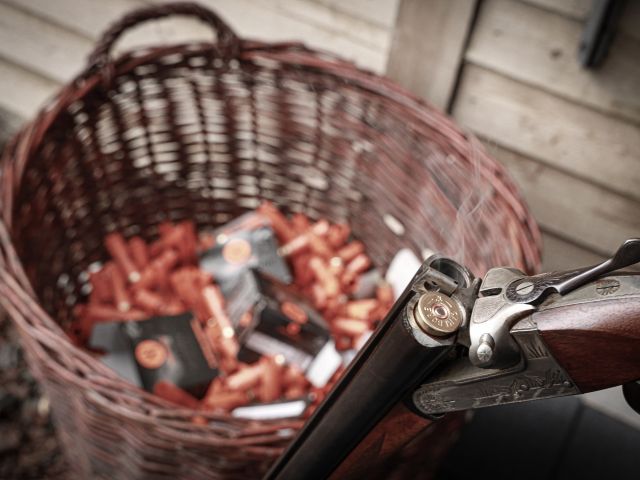
After a couple of misses, there is a hit and orange powder bursts from the clay pigeon. The grass on the shooting range is almost completely tainted orange.
White smoke rises from the gun.
A few metres back, some students are waiting for their turn, or for their friends to finish.
“You don’t exactly aim at anything, it’s more about finding the right line,” explains Stine Christensen.
There is no requirement for shooting precision to get the hunting license, but the students must learn basic shooting techniques, and weapon handling is an important part of the exam.
Two older men walk past with their rifles slung over their shoulders. The students chuckle – definitely not the way they have been taught to handle their rifles.
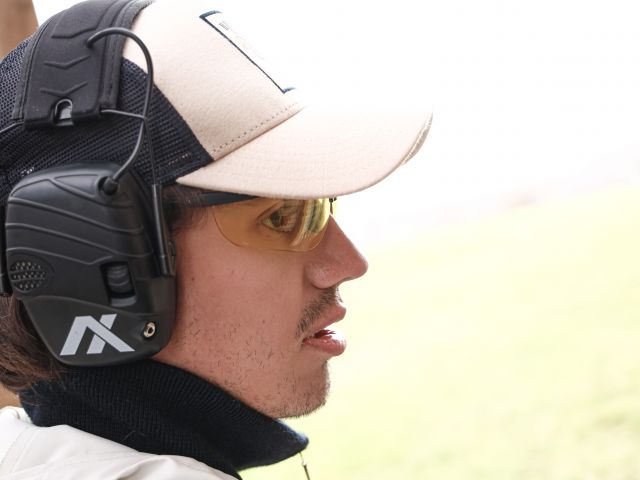
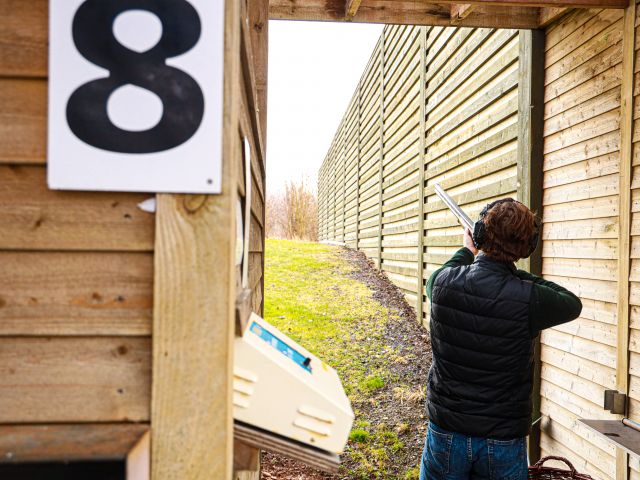
This afternoon, the students will hunker down in a tent for more theory. Hunting is not an escape from the books, at least not when you are a beginner. To become a hunter, you need to know the legislation and ethics for hunting in Denmark, for example which game are legal prey and the requirements for firearms and ammunition.
But first, the students go for another round on the distance judging course.
They congregate at the roadside chatting and making jokes. Waiting is part of the game.
Above the treetops, a duck flying overhead squawks.
“A mallard,” exclaims Marius Lohmann, peering at the sky with a pretend gun in his hands.
“Nah, 40 metres, it’s too far.”
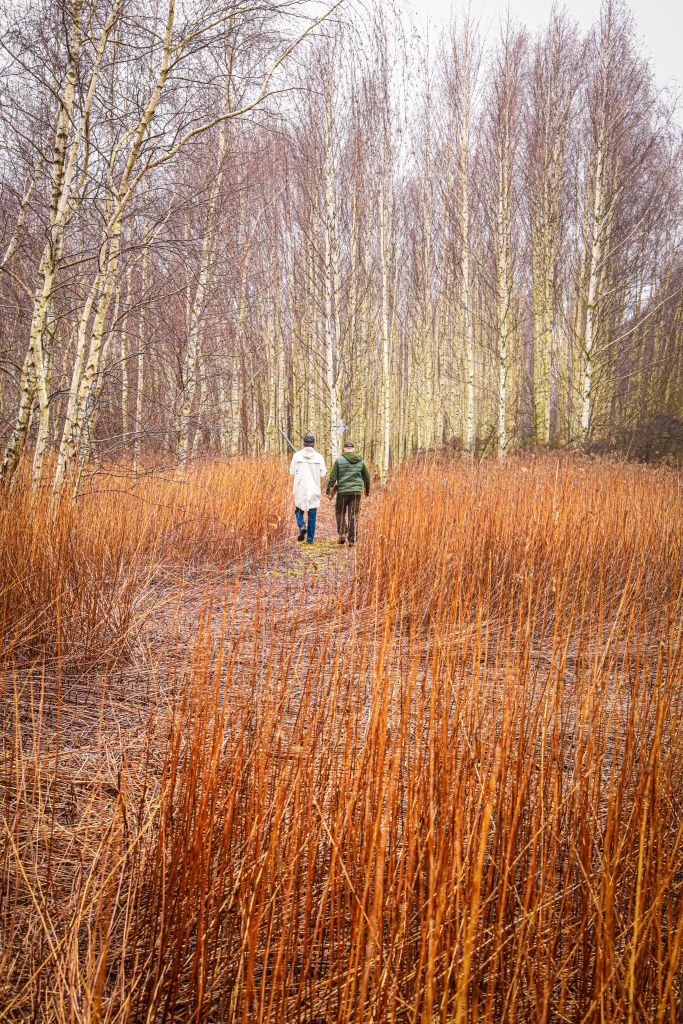



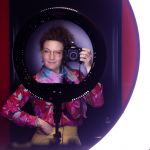
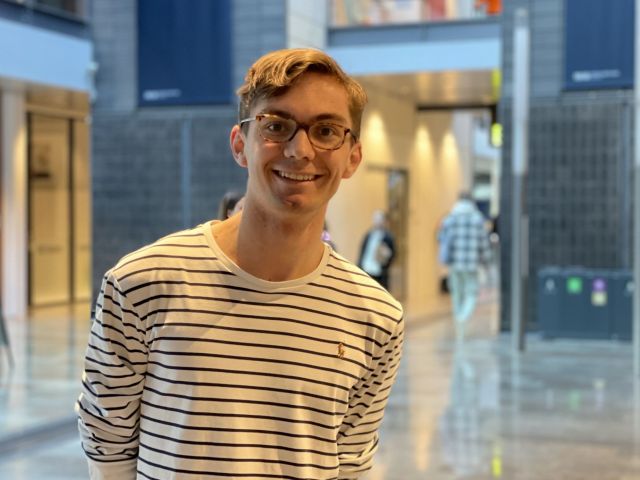
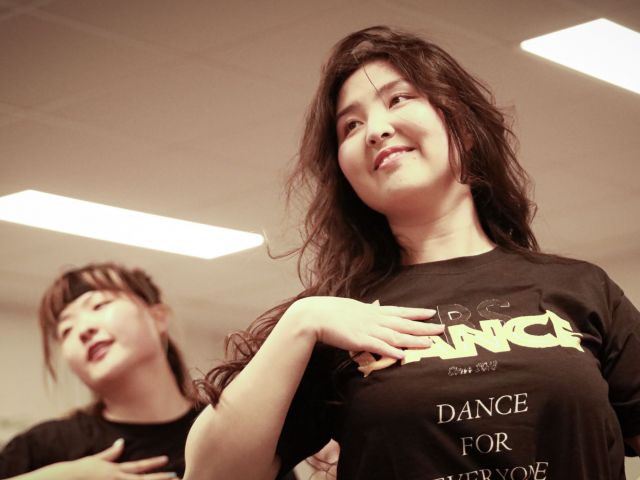
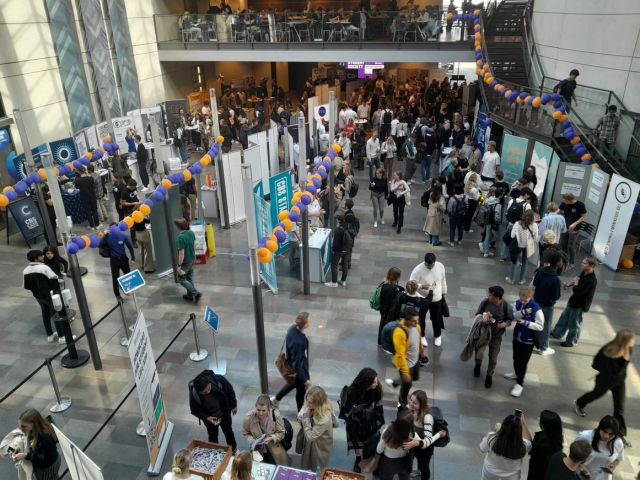
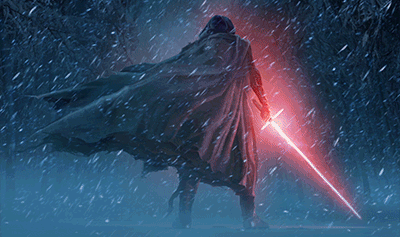

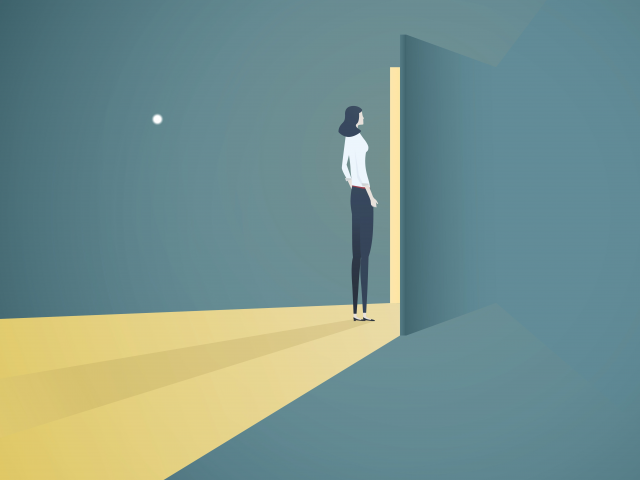




























































































































I wonder what kind of people would choose such a hobby? Really disgusting. More and more Danes have decided to become vegetarians. They have chosen to shoot innocent animals. I honestly believe that there is something wrong with their value system. And CBS officially allows this under its umbrella?